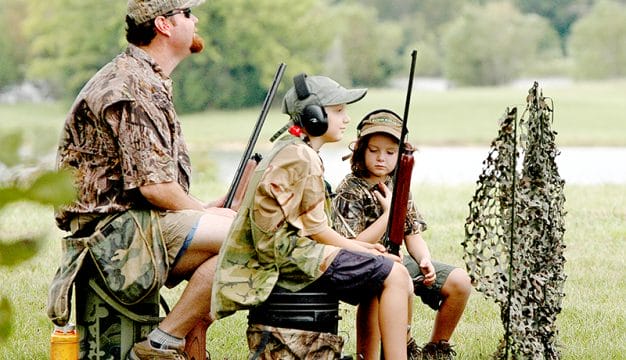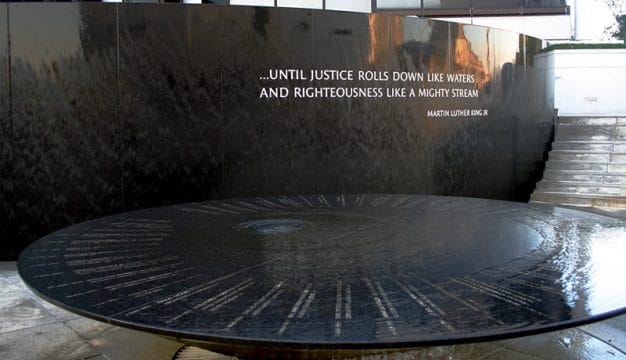Rose Bowl of 1926
The 1926 Rose Bowl game, in which the University of Alabama Crimson Tide defeated the heavily favored University of Washington Huskies, is often remembered in Alabama and throughout the South for restoring some measure of pride to the region.
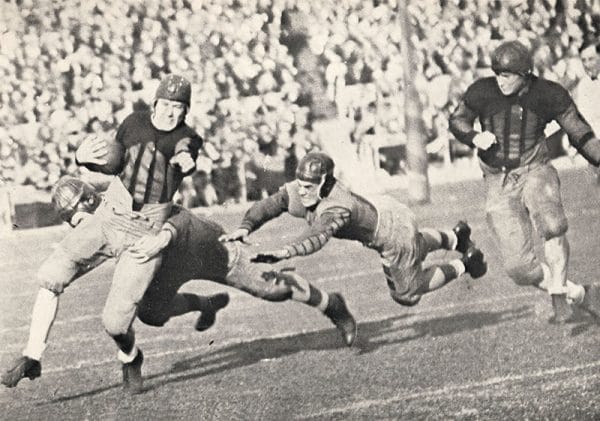 Johnny Mack Brown
Many southerners saw the Rose Bowl game as an opportunity to bring prestige and honor back to their region that had been ravaged by the Civil War. Even 60 years after the conflict, many older southerners remembered the war, and many more remembered Reconstruction. The South also was motivated by a national press that was critical of almost anything associated with the South, from the size of the southern brain cavity to the quality of its football. Thus, the Rose Bowl invitation to the University of Alabama (UA), the first team in the South to be so honored, set up what has been recognized by many historians and sports fans as the most important game in southern football history. Alabama was not simply representing its home state in a football game; it was carrying the banner for the entire South. One historian, in emphasizing the importance of the game’s outcome, characterized it as an inspiration to southerners who had for so long been burdened by the combined effects of poverty and political and social isolation resulting from a demoralizing military defeat.
Johnny Mack Brown
Many southerners saw the Rose Bowl game as an opportunity to bring prestige and honor back to their region that had been ravaged by the Civil War. Even 60 years after the conflict, many older southerners remembered the war, and many more remembered Reconstruction. The South also was motivated by a national press that was critical of almost anything associated with the South, from the size of the southern brain cavity to the quality of its football. Thus, the Rose Bowl invitation to the University of Alabama (UA), the first team in the South to be so honored, set up what has been recognized by many historians and sports fans as the most important game in southern football history. Alabama was not simply representing its home state in a football game; it was carrying the banner for the entire South. One historian, in emphasizing the importance of the game’s outcome, characterized it as an inspiration to southerners who had for so long been burdened by the combined effects of poverty and political and social isolation resulting from a demoralizing military defeat.
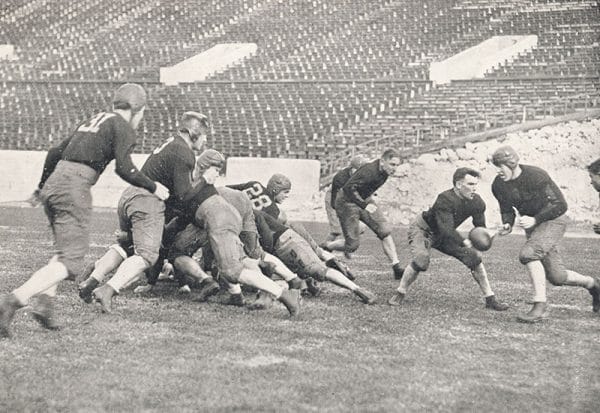 Crimson Tide Practice in Pasadena
The Rose Bowl, hosted annually in Pasadena, California, was the first post-season college football game in 1902. The invitation from the Rose Bowl committee provided UA the opportunity to play on the national stage and to prove wrong the assertion that southerners played an inferior quality of football. In 1925, the Crimson Tide, led by Coach Wallace Wade, recorded the first undefeated season in team history with a record of 9-0 and outscored its opponents, 277-7. This record, however, likely did not impress the Rose Bowl selection committee; many people outside the South thought that southern football was inferior to that played in the rest of the nation. UA was reluctantly invited to the bowl, however, after Dartmouth, Yale, and Colgate had all turned down invitations in response to criticisms that academic pursuits were taking a back seat to the growing popularity of athletics.
Crimson Tide Practice in Pasadena
The Rose Bowl, hosted annually in Pasadena, California, was the first post-season college football game in 1902. The invitation from the Rose Bowl committee provided UA the opportunity to play on the national stage and to prove wrong the assertion that southerners played an inferior quality of football. In 1925, the Crimson Tide, led by Coach Wallace Wade, recorded the first undefeated season in team history with a record of 9-0 and outscored its opponents, 277-7. This record, however, likely did not impress the Rose Bowl selection committee; many people outside the South thought that southern football was inferior to that played in the rest of the nation. UA was reluctantly invited to the bowl, however, after Dartmouth, Yale, and Colgate had all turned down invitations in response to criticisms that academic pursuits were taking a back seat to the growing popularity of athletics.
Before accepting the invitation, Wade warned his players that they would have to sacrifice their Christmas vacation, practice for an extra three weeks, and travel on a train for several days from Tuscaloosa to California. They also knew that they would face a University of Washington football team that had posted a record of 10-0-1 while scoring 461 points and holding its opponents to 39. The team quickly voted to accept the challenge. Additional pressure was soon put on the team by a melodramatic telegram campaign instigated by Tide booster Champ Pickens, who asked civic clubs in Tuscaloosa to send telegrams to the players reminding them that the honor of the South was on their shoulders.
The Washington Huskies were able to practice at their home campus in Seattle, Washington. Despite warnings from their coach Enoch Bagshaw, the Washington players were rumored to be overconfident, buying into the media’s portrayal of UA as a lightweight opponent. Tide players, by contrast, had even gone through a scrimmage during one stop and jogged during all others, on their journey to California, and they were subjected to very tough practices in Pasadena in the week leading up to the game. Although taking in some of the sights in nearby Los Angeles and mingling with Hollywood movie stars, the Alabama team remained focused on its mission.
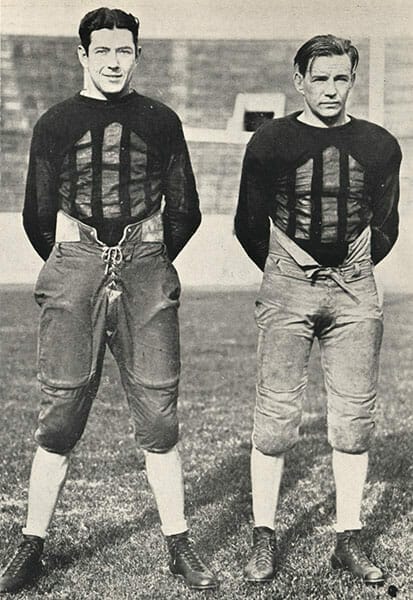 Johnny Mack Brown and Grant Gillis
On January 1, 1926, a near-capacity crowd of 45,000 witnessed one of the most exciting games in Rose Bowl history. Washington jumped ahead of Alabama and took a 12-0 lead into half time. In the second half, though, Alabama scored three touchdowns in less than seven minutes, taking the lead 20-12. Quarterback Allison “Pooley” Hubert, scored the first touchdown. Johnny Mack Brown, who later returned to Hollywood and achieved stardom in westerns, scored the other two touchdowns on a 59-yard pass from halfback Grant Gillis and a 30-yard pass from Hubert. Washington managed to score one more touchdown, but Alabama held on to win, 20-19, with Johnny Mack Brown making a game-saving tackle in the last seconds of play.
Johnny Mack Brown and Grant Gillis
On January 1, 1926, a near-capacity crowd of 45,000 witnessed one of the most exciting games in Rose Bowl history. Washington jumped ahead of Alabama and took a 12-0 lead into half time. In the second half, though, Alabama scored three touchdowns in less than seven minutes, taking the lead 20-12. Quarterback Allison “Pooley” Hubert, scored the first touchdown. Johnny Mack Brown, who later returned to Hollywood and achieved stardom in westerns, scored the other two touchdowns on a 59-yard pass from halfback Grant Gillis and a 30-yard pass from Hubert. Washington managed to score one more touchdown, but Alabama held on to win, 20-19, with Johnny Mack Brown making a game-saving tackle in the last seconds of play.
As the team travelled back home, they were met by proud southerners and brass bands in most southern towns that their train passed through. Even students at rival Tulane University cheered the team when it stopped in New Orleans. After the team finally arrived in Tuscaloosa players were feted at a wild parade that ended at the Quadrangle on campus, where most of the town turned out for speeches and accolades for the team.
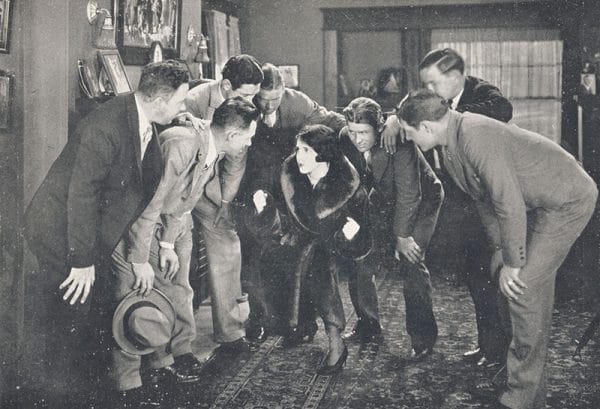 UA Football Players Meet Bebe Daniels
The victory raised the status of UA and southern football, and teams from the South played in 13 of the next 20 Rose Bowls. Alabama led with the most appearances, compiling a record of 4-1-1. In 1947, the Rose Bowl finally avoided southern teams and entered into an agreement with the Big 10 Conference in the Midwest to provide the opponent for a team from the Pacific 10 Conference on the West Coast. This agreement is still in effect today, with certain exceptions created by the Bowl Championship Series in which the Rose Bowl is a participant.
UA Football Players Meet Bebe Daniels
The victory raised the status of UA and southern football, and teams from the South played in 13 of the next 20 Rose Bowls. Alabama led with the most appearances, compiling a record of 4-1-1. In 1947, the Rose Bowl finally avoided southern teams and entered into an agreement with the Big 10 Conference in the Midwest to provide the opponent for a team from the Pacific 10 Conference on the West Coast. This agreement is still in effect today, with certain exceptions created by the Bowl Championship Series in which the Rose Bowl is a participant.
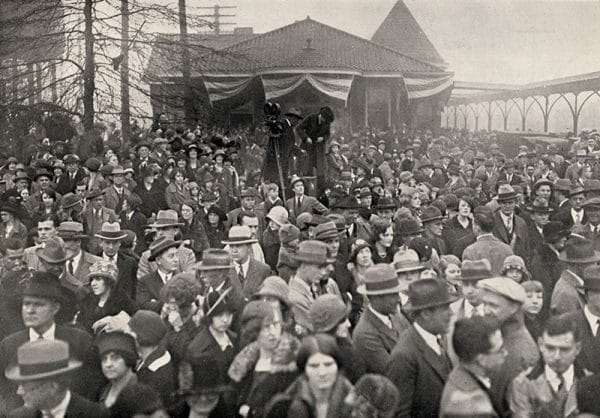 University of Alabama Team Returns to Tuscaloosa
The 1926 Rose Bowl changed the landscape of football in the United States, lifted a southern psyche that longed for something to be proud of, and started the University of Alabama’s journey toward becoming one of the nation’s most successful football programs.
University of Alabama Team Returns to Tuscaloosa
The 1926 Rose Bowl changed the landscape of football in the United States, lifted a southern psyche that longed for something to be proud of, and started the University of Alabama’s journey toward becoming one of the nation’s most successful football programs.
The school’s fight song, “Yea, Alabama,” was composed by UA music student Ethelred Sykes after the victory. The game and its continued influence on generations of Alabama fans are best reflected in the last lines of the school’s fight song:
“Fight on, fight on, fight on, men!
Remember the Rose Bowl we’ll win then!
Go, roll to victory, Hit your stride,
You’re Dixie’s football pride, Crimson Tide!”
Eighty-three years after its first appearance in the Rose Bowl, Alabama defeated the University of Texas on January 7, 2010, to win the 2009 BCS National Championship game played in the Rose Bowl stadium.
Additional Resources
Beidler, Phillip D. “The Story of Johnny Mack Brown.” Alabama Heritage 38 (Fall 1995): 14-25.
Groom, Winston. The Crimson Tide: An Illustrated History of Football at the University of Alabama. Tuscaloosa: University of Alabama Press, 2000.
